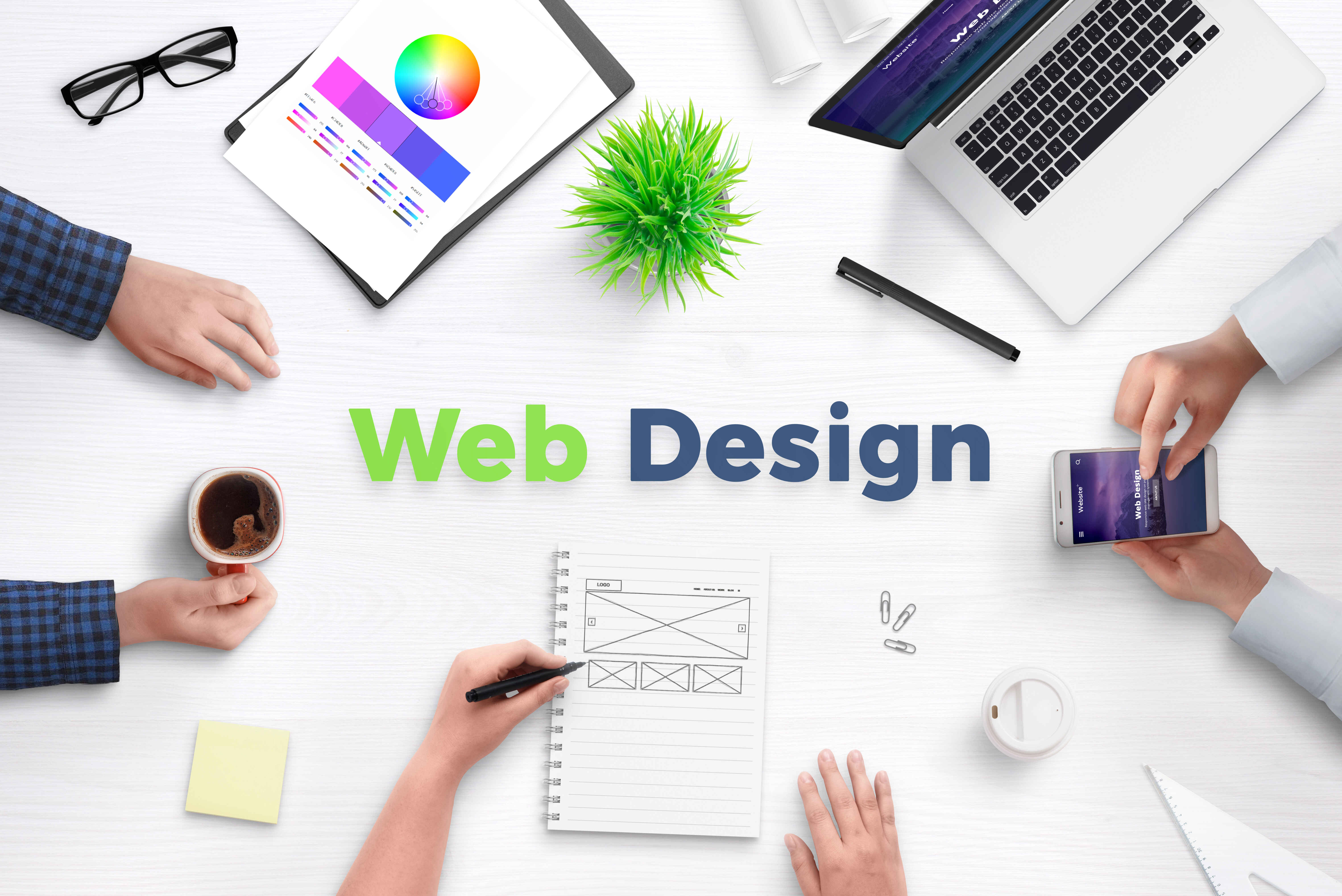The Ultimate Guide to Modern Web Design: Tips, Tools, and Trends
The Ultimate Guide to Modern Web Design: Tips, Tools, and Trends
Blog Article
Comprehending Customer Experience: Key Concepts for Effective Website Design
In the realm of web style, understanding individual experience (UX) is extremely important to producing systems that not just attract but likewise preserve users. Trick concepts such as user-friendly navigation and effective comments mechanisms play essential roles in promoting customer satisfaction. Furthermore, considerations for ease of access make certain that all users can engage with the content effortlessly. The nuances of visual layout and the value of iterative screening often remain neglected. As we check out these fundamental aspects, it comes to be evident that understanding UX is not merely an alternative yet a necessity for success. What are the effects of disregarding these concepts?
Importance of User Experience

In the realm of web design, one can not take too lightly the relevance of user experience (UX) as an essential component that straight influences the success of a website. A favorable UX not just boosts user complete satisfaction yet likewise promotes loyalty, encouraging repeat visits and communications. When customers run into a intuitive and appealing user interface, they are extra likely to explore the content, convert right into consumers, or share their experiences with others. This natural promotion can considerably magnify a brand's reach and presence.
In addition, the relevance of UX extends beyond simple aesthetics. It incorporates the overall capability of a web site, ensuring that navigation is smooth and information is conveniently obtainable. Sites that prioritize UX are usually regarded as even more trustworthy and reliable, which can have an extensive influence on conversion prices. In contrast, inadequate UX can cause stress, resulting in high bounce rates and lost chances.
Eventually, buying user experience is not just a style selection; it is a critical decision that can distinguish a brand in a congested marketplace. By concentrating on UX, organizations can create purposeful communications that resonate with customers, leading the way for continual success in the electronic landscape.
Use Principles
Reliable website design depends upon the application of key functionality concepts that make sure an internet site is both useful and straightforward. Central to these principles is the idea of intuition, where users can navigate the website effortlessly without considerable instruction. Clear navigation frameworks, including well-labeled food selections and regular layouts, enhance this intuitive experience, allowing users to situate info quickly.

Consistency is equally important; preserving harmony in design components, terms, and treatments across the website aids to decrease confusion. Customers need to not need to relearn just how to engage with various sections of the website.
In addition, mistake prevention and recovery are vital for usability. Sites need to be designed to reduce the opportunity of individual errors, and when mistakes happen, clear and positive mistake messages need to guide customers towards resolution.
Access Factors To Consider
Guaranteeing accessibility in website design is critical for producing inclusive electronic experiences that cater to all individuals, including those with specials needs. Ease of access considerations entail making web sites that accommodate diverse requirements, allowing individuals with aesthetic, acoustic, cognitive, or motor disabilities to navigate and connect properly.
To accomplish this, web developers should stick to developed standards, such as the Web Content Ease Of Access Standards (WCAG) These guidelines give a framework for making material perceivable, operable, reasonable, and durable. Key practices consist of ensuring adequate shade contrast, giving message options for non-text web content, and making certain her explanation keyboard navigability.
Additionally, semantic HTML ought to be made use of to improve screen reader compatibility, enabling users with aesthetic problems to comprehend the framework and meaning of content intuitively. web design. Offering clear, concise instructions and making use of straightforward language can further improve functionality for people with cognitive disabilities
Routine accessibility screening, involving genuine users with specials needs, is vital to determine obstacles and boost the individual experience. By focusing on accessibility, web developers not only follow legal standards but likewise promote a more fair digital landscape, ultimately benefiting everybody with improved use and involvement.
Aesthetic Layout Aspects
A myriad of aesthetic style elements plays a crucial role in shaping user perceptions and experiences on a site. These aspects consist of shade systems, typography, whitespace, imagery, and design, each adding to the general visual appeal and effectiveness of a website.

Color pattern evoke emotions and can influence customer actions; as an example, warm shades might produce a feeling of seriousness, while amazing colors usually promote peace. Typography, on the various other hand, influences readability and can develop a brand's individuality - web design. The selection of font design and dimension must align with the site's objectives and target audience
Images, consisting of icons and photos, enhances narration and can dramatically influence individual interaction. High-grade visuals produce a feeling of professionalism and reliability, while poor-quality pictures might interfere with the user experience.
Layout and whitespace are similarly crucial, as they lead users via the content. A well-structured design helps customers find details promptly, while adequate whitespace protects against clutter, promoting a more enjoyable surfing experience.

Testing and Iteration
Individual testing and iteration are essential components of a successful website design procedure. These practices make it possible for developers to collect valuable comments from real individuals, guaranteeing that the end product fulfills their requirements why not try here and assumptions. Individual testing includes observing exactly how actual users engage with a website, determining functionality issues, and comprehending user habits. This straight feedback is important in exposing pain factors that may not be noticeable throughout the layout stage.
Version, on the various other hand, is the process of refining the design based on the insights acquired from user testing. By making step-by-step adjustments and re-evaluating the design, teams can boost functionality, enhance aesthetics, and enhance user engagement. This intermittent strategy promotes a society of continuous renovation, allowing designers to adjust to customer demands and arising patterns efficiently.
Additionally, integrating both user screening and version right into the style procedure results in even more educated decision-making and ultimately dig this results in a much more user-centered item. By accepting these concepts, internet designers can develop much more instinctive, appealing, and effective experiences that reverberate with their target audience, ultimately driving higher individual contentment and retention.
Verdict
In final thought, user experience is a crucial element of efficient web layout, encompassing functionality, accessibility, and aesthetic factors to consider. Sticking to well established principles boosts individual satisfaction and engagement, promoting a much more comprehensive on the internet atmosphere. Continuous testing and version act as essential procedures for resolving and determining user discomfort points, ensuring that internet layouts stay versatile to progressing requirements. By prioritizing these aspects, internet developers can develop interfaces that not just meet user assumptions but likewise promote long lasting links.
In the world of internet style, understanding customer experience (UX) is critical to producing systems that not only draw in but likewise preserve users.In the realm of web design, one can not underestimate the significance of user experience (UX) as a pivotal element that directly influences the success of a site. Customer testing involves observing just how actual customers engage with a site, identifying functionality issues, and comprehending individual habits.In final thought, customer experience is a vital component of efficient internet layout, incorporating usability, access, and aesthetic factors to consider. Constant screening and iteration offer as important processes for addressing and determining user pain points, making sure that internet designs remain versatile to evolving needs.
Report this page